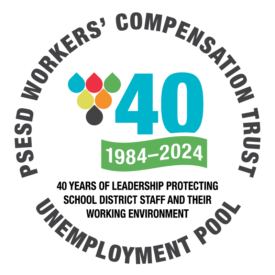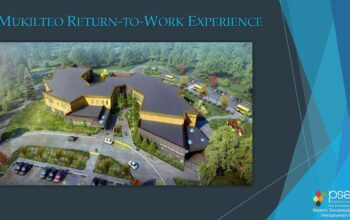By Clairmonte Cappelle, Executive Director
In the last issue of Sound Advice, I shared our intentionality at aligning our risk management work with our Agency’s END through the program’s Pathway to Change initiative. In this issue, I continue that discussion with a focus on the Stakeholder Experience, one of four areas that make up our Pathway to Change. I’ll address the other three (3) components in future issues.
The Stakeholder Experience component of our Pathway to Change initiative aims to create a consistent, quality experience for school districts, injured workers, and providers. We’ve made a concerted effort at soliciting feedback from our school districts and injured workers through surveys which we recently launched and will be administering on a periodic basis to gauge experience and satisfaction with our services. This will inform changes in service delivery where appropriate.
Injured Workers
Our approach to a consistent, quality experience for injured workers is rooted in an advocacy model. It begins at the time the injury is reported when, in addition to traditional claim reporting information, we solicit voluntarily submitted heritage information to inform the delivery of culturally responsive services. This process results in being informed of the injured worker’s preferred language of communication as well as identification of psychosocial recovery barriers to which solutions can be developed in a timely manner. Another aspect of the advocacy model we employ is assisting the injured worker in navigating across a complex system through consistent and transparent communication where the injured worker understands, in crystal-clear messaging, the major activities and milestones that will occur throughout the recovery and return-to-work process. This shared understanding avoids any surprises and confusion that may frustrate the injured worker and unnecessarily create an unfavorable experience with our services. Lastly, we deliver services with empathy, treating the injured worker holistically, and with compassion and understanding, which builds the rapport and trust necessary to support the injured worker’s functional restoration, recovery, and return-to-work.
The experience we desire for our injured workers as outlined above is consistent with a progress measure of our Agency – that the students we serve experience a racially just and humanizing school system. It’s only befitting that we aspire the same for school district staff who become injured in the course and scope of service to them.
School Districts
We also endeavor to create a consistent, quality experience for school districts with our services. We aim to partner with our school district members to create a safe workplace culture through best-practice loss control services and to do so in a culturally responsive manner. That means collaborating with our school district partners to deliver content for safety education and trainings in a manner that is understood by and resonates with school district staff. It also means that we encourage supervisors of injured workers to stay in touch with them and continue to keep them in the loop on developments occurring at the worksite, thus demonstrating their value to the school. Humanizing the return-to-work process also means providing meaningful, transitional work, and not just menial tasks, as part of the recovery process. Towards that end, we work closely with our school district partners to develop and maintain a bank of transitional duty jobs to be accessed and aligned with the medical restrictions of the injured worker until full duty return-to-work.
Summary
The experience we aspire for our school district partners, their employees, and injured workers is aligned with our Agency’s END of ensuring Success for Each Child and Eliminate the Opportunity Gap by Leading with Racial Equity. We aim to contribute to student success and learning by collaborating with our partners, including vendors, to deliver services that create a consistent, quality experience for our school districts and injured workers and to do so in a culturally responsive manner. In doing so, we hope to contribute to school district staffing consistency and stability through injury/illness prevention and averting unnecessary disability duration through return-to-work programs. This is the Educational Continuity component of our Pathway to Change initiative, which I will address in the next issue of Sound Advice.




